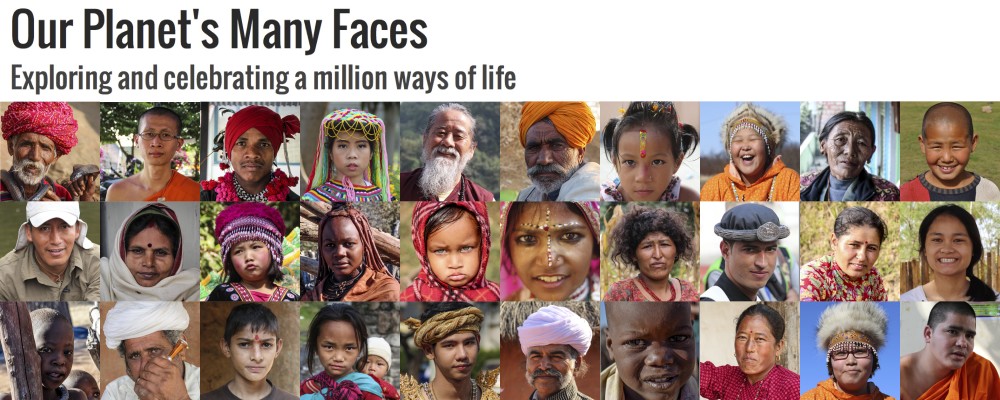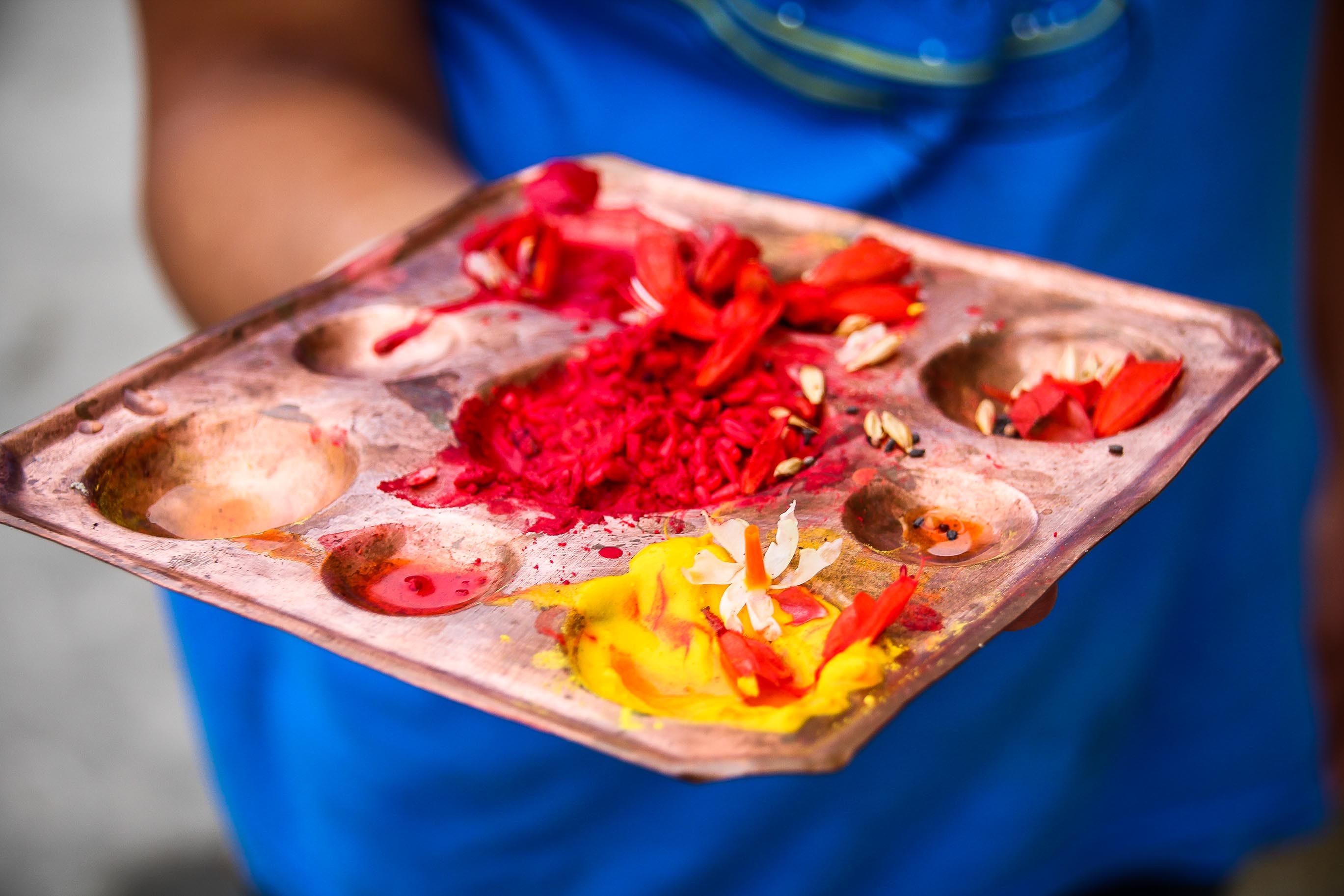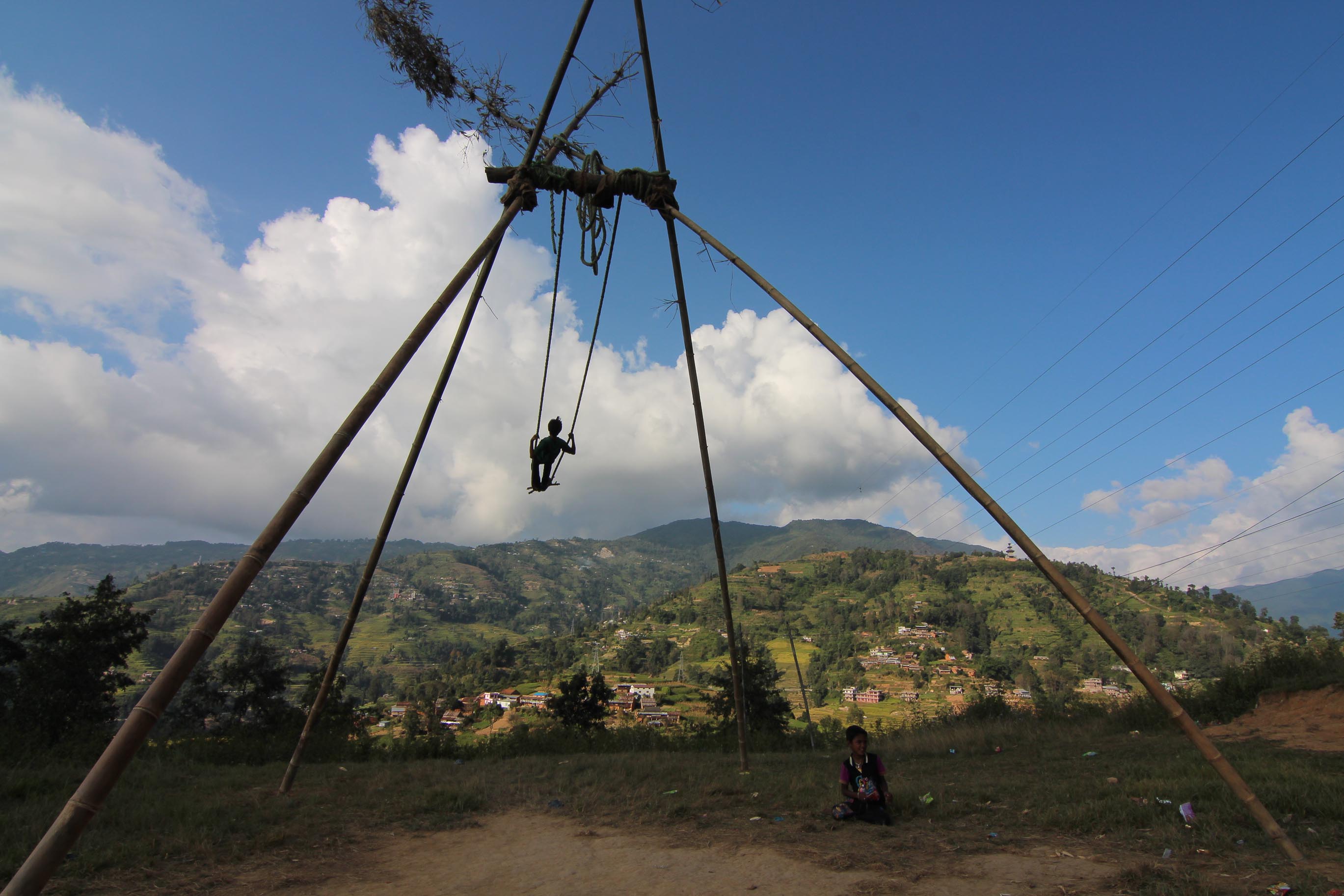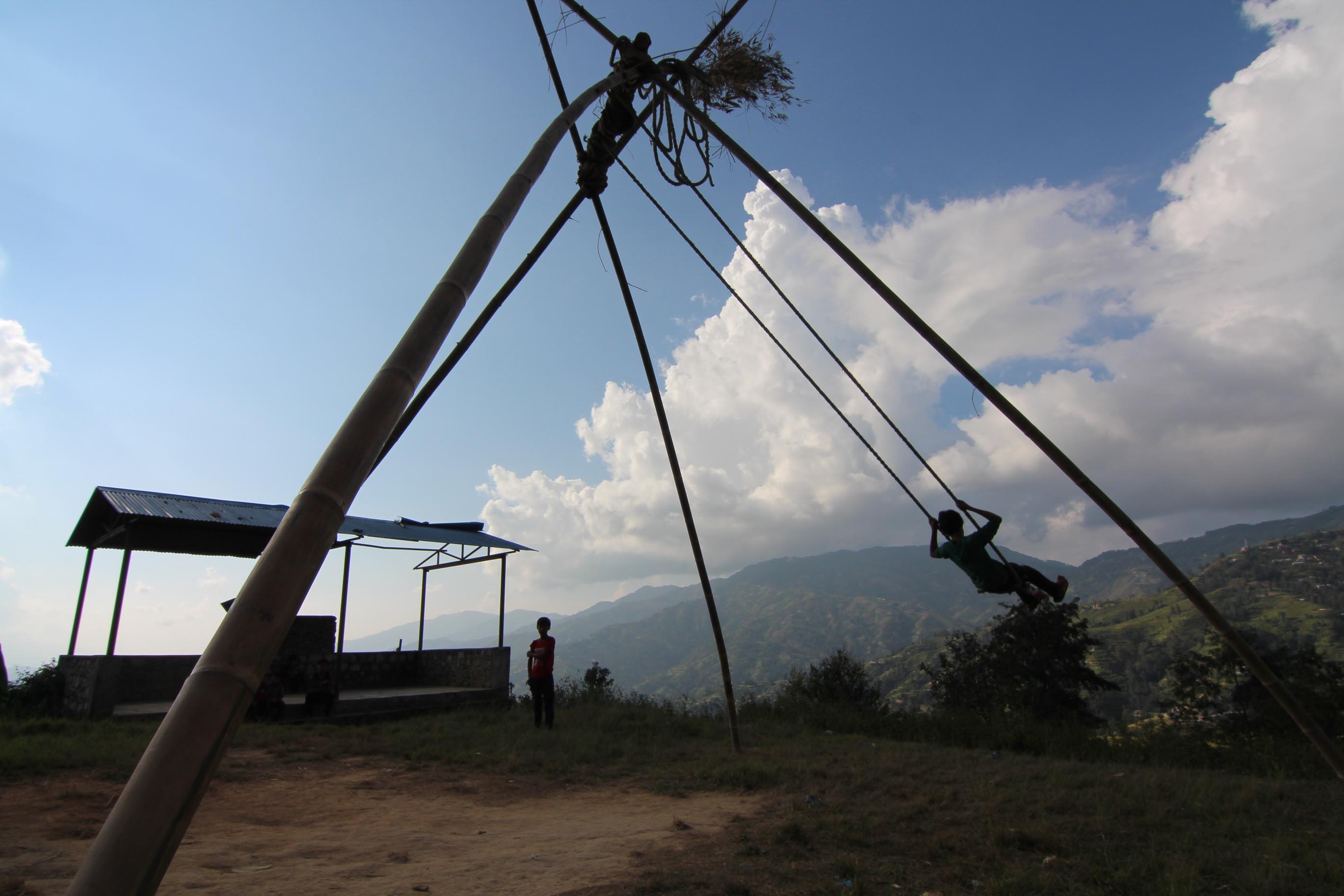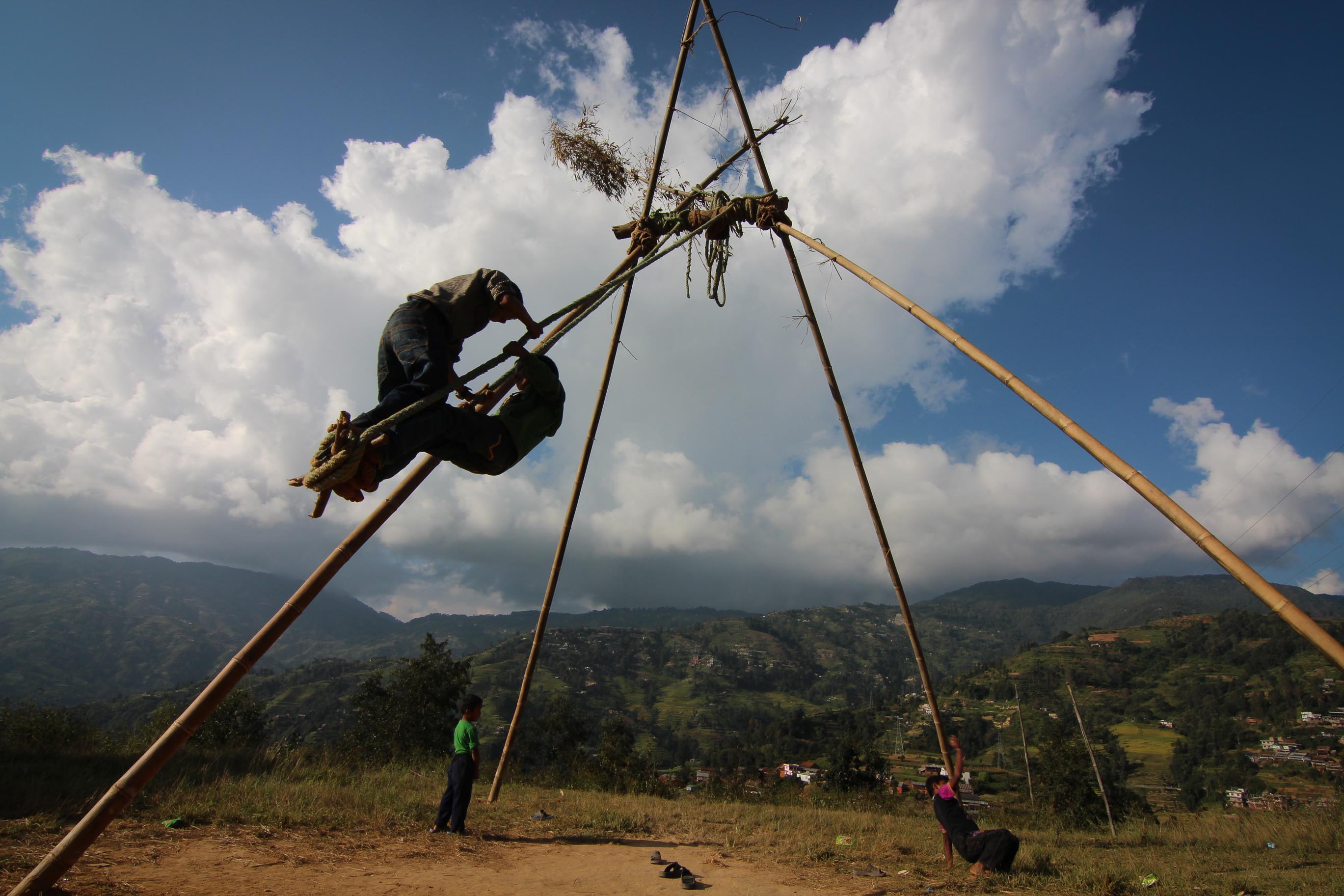Kites soar above the houses of the sprawling city of Kathmandu and its surrounding hillside villages. Children form lines at the base of towering traditional bamboo swings. Local buses, bearing the weight of hundreds of passengers, baskets of produce, and live goats, run back and forth to local communities, brining families together. City market spaces and squares display hundreds of goats for sale, and butchers busily chop apart blocks of meat. Family members laugh as they apply a thick, lumpy, red paste to one another’s foreheads, accompanied by the muttering of blessings and good fortunes for one another. The air is thick with the scent of animal blood, cooking food, and incense.
During the end of September and beginning of October, businesses across the country of Nepal come to a near standstill for 15 days, as residents celebrate the Dashain Festival with family and friends. This year’s Dashain Festival took place from Sept. 25-Oct. 4.
Shiva Pd. Phuyal is one among the thousands celebrating this festival with his immediate and extended family. Phuyal is an assistant principal and well-known figure in the community of Jitpur, a 45-minute bus ride into the steep hillsides surrounding Kathmandu. Like most individuals throughout Nepal, Dashain is one of Phuyal’s favorite festivals. ““Dashain is important because of [the] memory of all the relatives and giving thanks and love [to] each other,” explains Phuyal.
According toAvigya Karki, as published on VisitNepal.com, this ancient festival is celebration in remembrance of the goddess Durga killing the demon named Mahisasur. As a whole, the festival represents the victory of good over evil, with strong emphasis on connecting with family. Each day within the festival serves its own purpose and is celebrated in its own way.
The Fifteen Days of Dashain
1st Day: Ghatasthapana
This day marks the beginning of the Dashain Festival. On this day, each household establishes “Dashain Ghar,” a place to honor the Hindu goddess, Durga. “In Nepal the life force is embodied in the divine energy and power of the female, depicted as goddess Durga in her many forms,” Karki describes.
According to Phuyal, this is the place where the family plants corn and wheat seeds in shallow soil. These plants will be grown in a dimly lit room for 9 days in order to produce a sprout that is yellow in color rather than green. The sprouts are called “jamara” and it is believed that their yellow color is pleasing to Durga, the Hindu mother goddess.
7th Day: Fulpati
This day of celebration kicks off the main Dashain festivities. On this day, a festive procession can be observed parading through Basantapur Darbar in Kathmandu. According to Karki, the procession is formed around the royal water vessel, honoring Durga, which is filled with holy water, banana stalks, jamara and sugar cane, tied with red cloth, and carried under an embroidered umbrella. Crowds assemble to enjoy the parade, which includes military, government officials, and the firing of the “big guns.”
Hundreds of live goats may be seen in the market spaces and squares, as families typically purchase goats on this day. It is not uncommon to find goats inside the packed public buses, or tied to the rooftops, as rural residents make their way home with the main course for the next day’s feast.
8th Day: Mahaastami
On this day, families sacrifice goats and butcher the meat. The evening of this day is called, “Kal Ratri” which translates as “Dark Night.” On this night, hundreds of sacrifices are made in temples. Portions of goat meet are fried over open fire pits and stovetops. Nearly every part of the goat is utilized, including the brain, eyes, intestines, and feet. A salty, hot dish may be prepared from the coagulated blood.
9th Day: Maha Nawami
On this day, animal sacrifices increase as the festival is nearly at its climax. According to VisitNepal, temples such as Hanuman Doka are filled with crowds, animals, and ankle-deep blood. On this day, all vehicles and machines are worshiped and receive blessings for protection.
10th Day: Vijaya Dashain
“My favorite parts of Dashain is all of the families who live in the main person’s house, gathering in one place and wearing tika,” describes Phuyal. Phuyal is not alone in his eagerness towards this festive day of Dashain, the main day of the holiday.
Vihaya Daishain is marked by family gatherings in which they give blessings, tika, and jamara to one another.
Tika is a red paste that plays an essential role in the Dashain Festival. It is made of uncooked rice, yogurt, banana, and a red dye called abir. At family gatherings, older family members “give tika” to younger family members, saying blessings while they place the red paste on their foreheads, and then tuck jamara in their hair. Gifts of money are also exchanged, though the giving and receiving is determined based on age and gender.
Throughout the final 4 days of Dashain, families travel to one another’s houses to visit and receive tika.
Other Festivities
According to Nepal Vista, many additional festivities are enjoyed throughout the festival. These include relaxation, shopping, cleaning, decorating the home, indulging in food, and visiting friends and relatives. Among these, the most unique activities to Dashain are kite flying and swinging.
Changa: Flying Kites
“The day-sky is filled with colorful kites like shinning stars in the night,” describes Nepal Vista. According to Phuyal, this past-time most likely became a Dashain event due to its timing with the seasons. Monsoon season in Nepal typically concludes at the end of September, allowing for clear, blue skies during the second half of Dashain.
Ping: Bamboo Swings
Communities construct traditional bamboo swings that often exceed 20 feet in height. Children and other community members congregate around these swings throughout the festival to enjoy a turn swinging.
